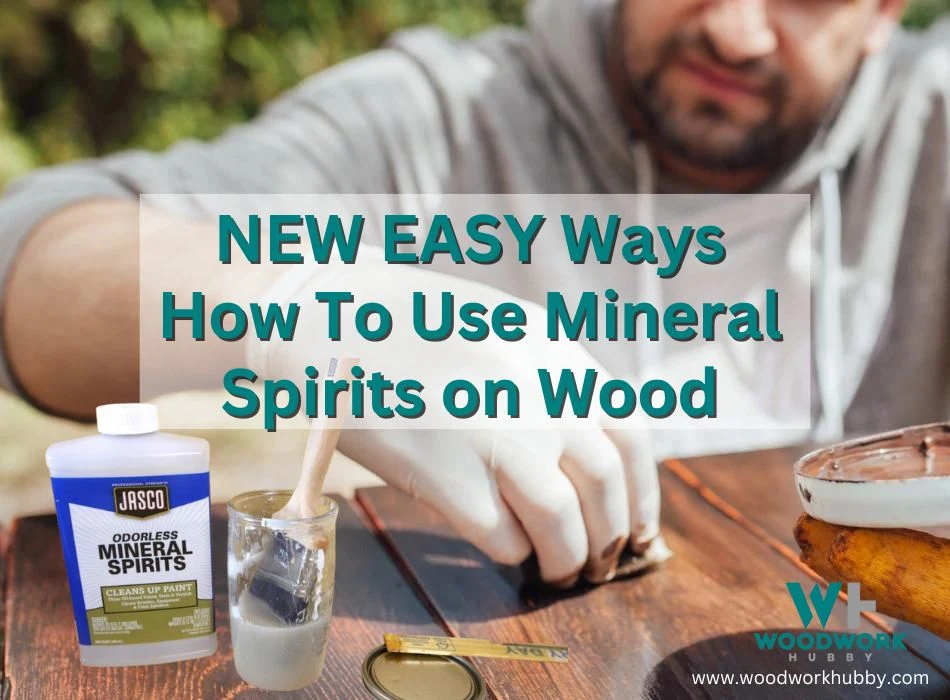Are you struggling with how to properly use mineral spirits on your wood furniture or projects? I completely understand as I’ve also spent countless hours trying to ensure this solvent doesn’t damage my woodworking creations.
After much research and hands-on experience, I have gathered some new and easy techniques for using mineral spirits on wood that help enhance the beauty of the grain without causing harm.
Let’s dive right in because once you master these methods, you’ll be amazed by the transformation of your wooden piece!
Key Takeaways
- Mineral spirits are petroleum-based solvents commonly used in woodworking for cleaning, thinning, and preparing wood surfaces.
- They are gentler and safer to use compared to other solvents like turpentine, denatured alcohol, and acetone.
- Mineral spirits can be used to clean wood, prepare it for staining, reveal the wood grain, and restore warmth and shine to old pieces.
- To use mineral spirits on wood, gather the necessary supplies, perform a test on scrap wood first, apply the mineral spirits using a clean cloth or brush, and allow the wood to dry completely before proceeding with further treatments or finishes.
Understanding Mineral Spirits
Mineral spirits are a type of solvent commonly used in woodworking and other industries for cleaning, thinning, and preparing surfaces.
Definition and Common Uses
Commonly known as white spirits or paint thinner, mineral spirits are petroleum-based solvents widely used in the woodworking and painting industries. They hold a significant role in staining and painting wood, thinning paints for easier application, cleaning woodworking tools, and removing oils, adhesive residue, and dirt from various surfaces.
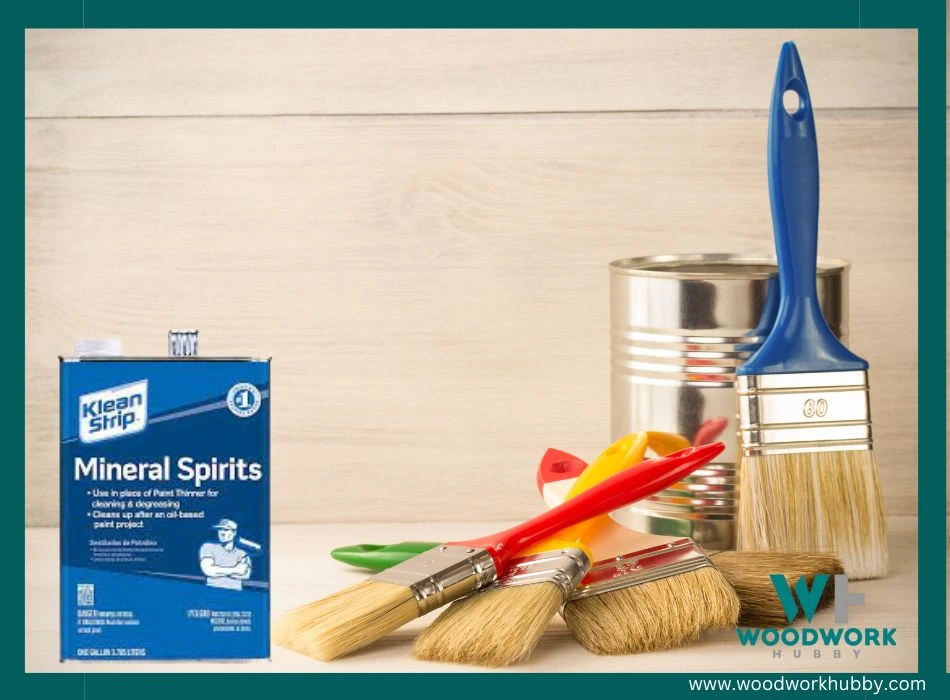
In terms of its effect on wood coloration? It gives a temporary alteration highlighting the flaws and finishing lines. Not all mineral spirits are created equal though – lower grade products might not clean as effectively as their higher-grade counterparts and could leave unwanted residues on your wooden pieces.
That’s why it’s crucial to choose products from reputable companies known for quality. This ensures you obtain vibrant results while rejuvenating older wood pieces with restored warmth and shine without stripping away natural oils or causing damage to your much-loved wooden objects!
Comparison with Other Solvents and Thinners
Mineral spirits play a significant role in the woodworking and painting industries, primarily as thinners and solvents. Their versatility and certain unique characteristics distinguish them from other similar products.
Here’s a comparative table outlining the differences between mineral spirits and other common solvents and thinners:
| Product | Primary Use | Odor | Safety |
|---|---|---|---|
| Mineral Spirits | Used for staining and painting wood, cleaning wood surfaces, and thinning stains. | They have a gentler smell compared to other solvents. | Mineral spirits are considered safer to use than some other solvents, but they still require protective gear and careful handling. |
| Turpentine | Traditionally used as a solvent and thinner for oil-based paints. | Turpentine has a strong, pungent smell that can be overwhelming. | Despite its effectiveness, it is more hazardous and requires good ventilation and protective gear. |
| Denatured Alcohol | Used to clean paint brushes and as a solvent in shellac. | Denatured alcohol has a strong, unpleasant odor. | It is highly flammable and toxic if swallowed or absorbed through the skin. |
| Acetone | Commonly used to remove nail polish and clean tools. | Acetone has a sharp, pungent odor. | While it is very effective as a solvent, it is also highly flammable and can irritate skin and eyes. |
Each of these solvents and thinners has its benefits and drawbacks. However, compared to the rest, mineral spirits are the go-to option for many due to their effectiveness, gentler smell, and relative safety.
The Role of Mineral Spirits in Woodworking
Mineral spirits play a crucial role in woodworking by providing various benefits such as cleaning wood, preparing it for staining, revealing wood grain, and restoring warmth and shine to old pieces.
Cleaning Wood
As a DIY enthusiast, I swear by the use of mineral spirits for cleaning wood. Not only do they effectively eliminate dirt and grime, but also residual oils and adhesive build-up that can tarnish the natural beauty of wood surfaces.
The process is straightforward – simply dampen a clean lint-free cloth with mineral spirits and steadily wipe down your wooden piece. No rigorous scrubbing is necessary! Mineral spirits are mild yet potent cleaners that won’t damage or discolor the wood.
They even highlight hidden flaws in the grain patterns while preparing it for staining or painting. This method has always left my woodworking projects looking fresh and ready for further treatment, providing an excellent starting point to achieve pristine finished results.
Preparing Wood for Staining
To prepare wood for staining, I always start by cleaning the surface thoroughly. Dust and debris can affect how well the stain adheres to the wood, so it’s important to remove any dirt or grime.
I use mineral spirits on a lint-free cloth to wipe down the entire surface, making sure to get into all the nooks and crannies. This not only cleans the wood but also helps open up the pores of the wood, allowing for better absorption of the stain.
Once I’ve cleaned the wood with mineral spirits, I let it dry completely before moving on to applying my chosen stain color. By properly preparing the wood with mineral spirits, I find that my stains go on more evenly and give me a beautiful end result every time.
Revealing Wood Grain
One of the key roles of mineral spirits in woodworking is revealing the natural beauty and intricacy of wood grain. When applied to a finished or unfinished piece of wood, mineral spirits can temporarily darken the surface and make the grain more prominent, allowing you to see its unique patterns and textures.
This effect can be particularly useful when deciding on a stain or finish for your project, as it helps you visualize how different treatments will enhance or alter the appearance of the wood.
Additionally, by highlighting flaws and imperfections in the wood, mineral spirits enable you to identify areas that may need extra sanding or attention before applying a protective finish.
Restoring Warmth and Shine
To restore warmth and shine to older wood pieces, mineral spirits can be a game-changer. Over time, wooden furniture or surfaces may accumulate grime, old finishes, or built-up residue that dulls their appearance.
Mineral spirits come to the rescue by gently cleaning away these impurities without causing damage or stripping away natural oils. With just a damp lint-free cloth soaked in mineral spirits, you can effortlessly wipe down your wood pieces and watch as they regain their luster and glow.
It’s amazing how this simple solution can make even the dullest wood look vibrant again! So if you have an antique desk or a tired-looking coffee table that needs some tender loving care, give mineral spirits a try – your wood will thank you for it!
How to Use Mineral Spirits on Wood
To use mineral spirits on wood, gather the necessary supplies and perform a test on scrap wood before applying it to your project. Apply the mineral spirits using a clean cloth or brush, making sure to cover the entire surface.
Allow the wood to dry completely before proceeding with any further treatments or finishes. Curious about special applications of mineral spirits? Read on to find out more!
Video showing how to use mineral spirits on wood
Required Supplies
To use mineral spirits on wood, you will need a few basic supplies. First, gather some lint-free cloths or rags that are suitable for applying the mineral spirits to the wood surface.
These cloths should be clean and free from any debris or dirt that could scratch the wood. You’ll also need a small container or dish to pour the mineral spirits into for easy application.
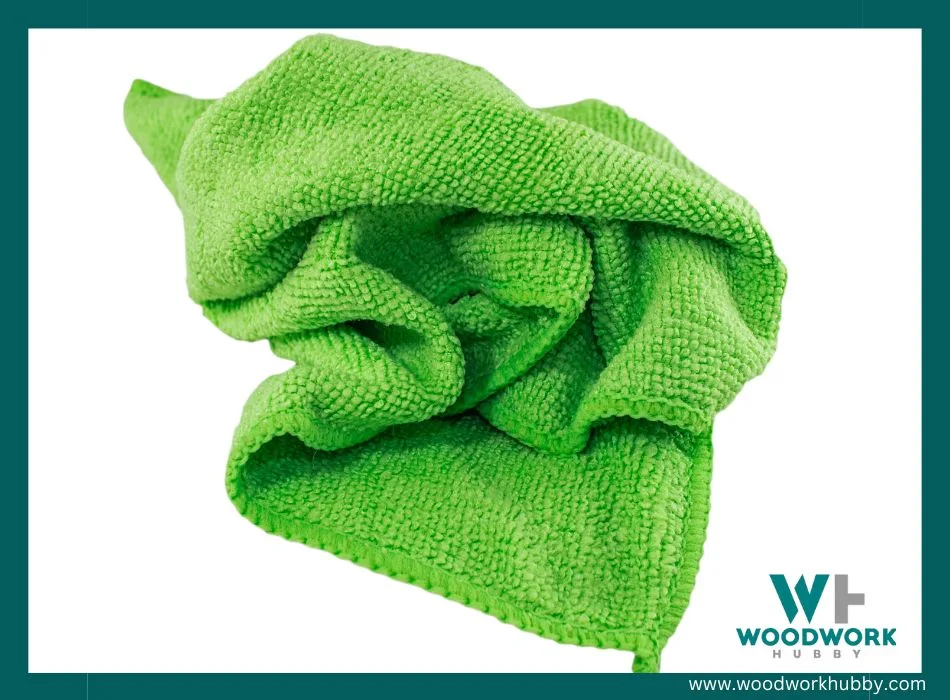
Additionally, it’s important to have a well-ventilated workspace or area where you can work safely with the solvent. And finally, make sure to wear protective gloves and safety glasses to protect yourself from any potential splashes or contact with the skin.
General Application Method
To apply mineral spirits to wood, follow these simple steps:
- Gather the required supplies: mineral spirits, lint-free cloth or brush, and a well-ventilated workspace.
- Before applying mineral spirits directly to your wood surface, it is important to test it on a scrap piece of wood or an inconspicuous area. This will ensure that there are no adverse effects or discoloration.
- Dampen a lint-free cloth with mineral spirits or use a brush to apply it evenly onto the wood surface. Make sure not to oversaturate the cloth or brush.
- Gently rub the dampened cloth in the direction of the wood grain. This will help remove dirt, grime, and any old finishes.
- Allow the mineral spirits to penetrate and dissolve any adhesive residue or oils on the surface for a few minutes.
- After giving enough time for the mineral spirits to work its magic, wipe away the excess solution with a clean lint-free cloth.
- Let the wood dry completely before proceeding with staining or applying any protective finish.
Test on Scrap Wood
Before applying mineral spirits to your wood project, it is always a good idea to test it on a scrap piece of wood first. This allows you to see how the wood will react to the mineral spirits and ensure that there are no unwanted side effects or damages.
By applying a small amount of mineral spirits onto the scrap wood and letting it dry, you can observe any changes in color, texture, or finish. This simple step helps you avoid potential problems and ensures that your final application on the actual project will yield satisfactory results.
Apply Mineral Spirits
To apply mineral spirits on wood, you will need a soft cloth or sponge and a small container to hold the solvent. Start by cleaning the wood surface with soap and water to remove any dirt or debris.
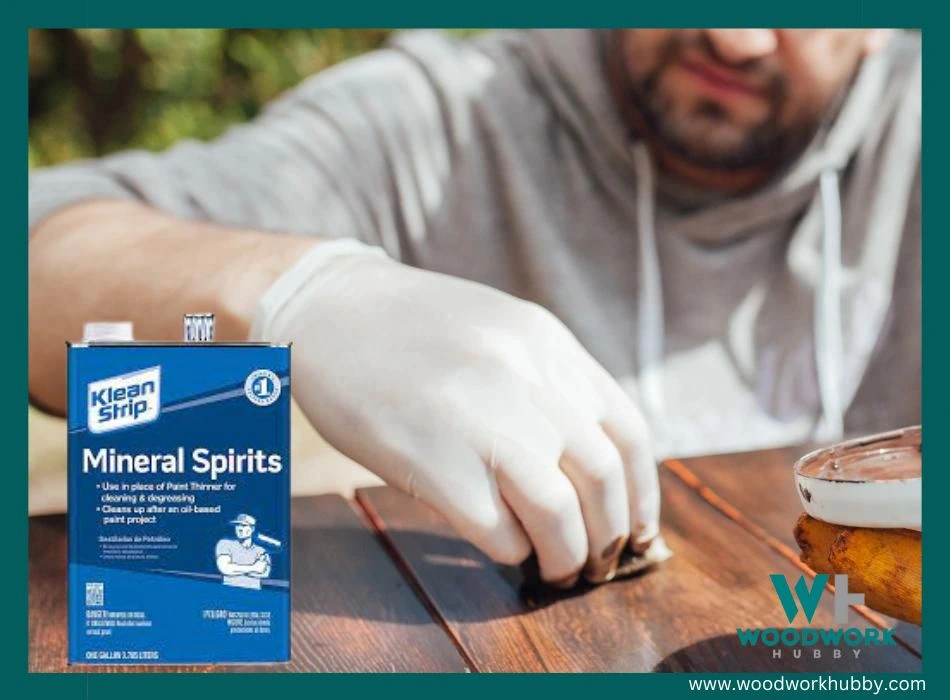
Once the wood is dry, dip your cloth or sponge into the mineral spirits and gently wipe it onto the surface in smooth, even motions. Be sure to work in small sections at a time and avoid applying too much pressure as this can damage the wood grain.
Allow the mineral spirits to sit on the wood for a few minutes before wiping away any excess with a clean cloth. This process will help remove oils, grime, and old finishes from the wood, revealing its natural beauty while preparing it for staining or refinishing.
Allow Wood to Dry
After applying mineral spirits to the wood surface, it is important to allow the wood to dry completely before moving on to the next step. This drying process typically takes anywhere from 15 minutes to an hour, depending on factors such as temperature and humidity levels.
During this time, the mineral spirits will evaporate and leave behind a clean and refreshed surface. It is crucial not to rush this step in order to achieve optimal results. Once the wood has dried, you can proceed with staining or further woodworking processes knowing that your surface is ready for its next transformation.
Special Applications of Mineral Spirits
– Mineral spirits can be used to remove stubborn stains from wood surfaces and clean oils from exotic or oily woods, making woodworking processes easier.
– They are also effective in removing tackiness from stained wood and cleaning paintbrushes after using oil-based paints.
– Discover more about these special applications of mineral spirits on wood by reading the full blog post.
Removing Stains
Mineral spirits can be a great solution for removing stubborn stains from wood surfaces. Whether it’s tree sap, adhesive residue, or oil-based stains, mineral spirits can effectively break down and remove these unsightly marks.
Simply dip a clean cloth into the mineral spirits and gently rub it onto the stained area until the stain begins to lift. It’s important to work in small sections at a time and avoid excessive rubbing, as this may damage the wood surface.
Once the stain is removed, wipe away any excess mineral spirits with a clean cloth and allow the area to dry completely before applying any finishes or coatings. Keep in mind that while mineral spirits are effective at removing stains, they should only be used on finished wood surfaces and not on unfinished or untreated wood.
Cleaning Oils from Oily Woods
To clean oils from oily woods, mineral spirits are an effective solution. Oily woods, such as teak or rosewood, can be challenging to work with due to their natural oil content. Mineral spirits act as a solvent, breaking down and dissolving the oils on the wood surface.
To clean oily woods using mineral spirits, simply dampen a lint-free cloth with the solvent and gently rub it onto the wood surface. The mineral spirits will cut through the oils, effectively removing them and leaving the wood clean and ready for further treatment or finishing.
It is important to let the wood dry completely before applying any additional products or treatments to ensure optimal results.
Removing Tackiness from Stained Wood
To remove tackiness from stained wood surfaces, mineral spirits can be a lifesaver. Simply dip a clean cloth or rag into the mineral spirits and gently wipe it over the sticky areas of the wood.
The mineral spirits work to dissolve any residues or excess stain that may have not fully dried, leaving you with a smooth and touchable finish. Just make sure to always test on a small, inconspicuous area first to ensure that the mineral spirits do not damage or discolor the wood surface.
With this easy solution, your once tacky stain will be transformed into a professional-looking finish in no time!
Cleaning Paintbrushes
Cleaning paintbrushes is an important step in maintaining their quality and prolonging their lifespan. Mineral spirits can effectively clean oil-based paints from paintbrushes, ensuring that they are ready for future use.
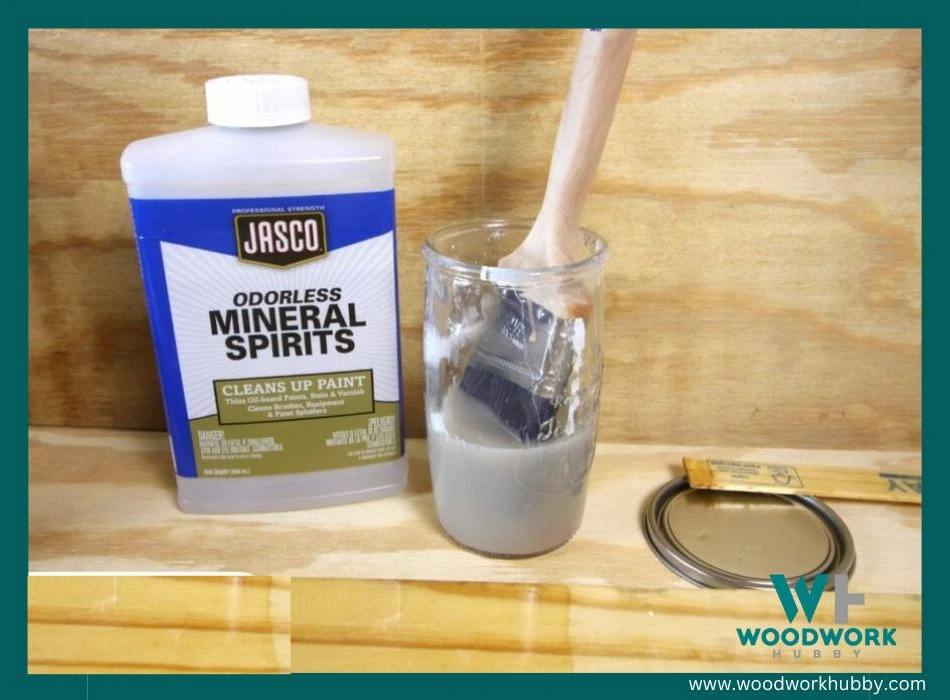
To clean your paintbrush with mineral spirits, you will need a container filled with the solvent. Swirl the brush around to loosen any remaining paint on the bristles. Afterwards, wipe off any excess solvent using a cloth or paper towel.
Repeat this process until the brush is free of paint residue. Finally, rinse the brush with soap and warm water to remove any remaining traces of mineral spirits and allow it to air dry before storing it for future use.
The Effects of Mineral Spirits on Wood
Mineral spirits can have temporary effects on wood, such as changing the color and highlighting flaws, while also providing a clean surface for staining or finishing.
Temporary Effects
When using mineral spirits on wood, there are some temporary effects to be aware of. First, mineral spirits can temporarily change the color of the wood. This is particularly noticeable when applying it to unfinished or bare wood surfaces.
The mineral spirits can highlight any flaws in the wood, such as scratches or dents, as well as reveal any previous finishing lines that may have been hidden. However, once the mineral spirits evaporate and the wood dries, these temporary color changes usually fade away.
It’s important to keep this in mind when working with mineral spirits on your woodworking projects and not be alarmed by any initial color changes you may see.
Long-term Effects
Over time, the use of mineral spirits on wood can have several long-term effects. One important consideration is that prolonged exposure to mineral spirits may cause discoloration or fading of certain types of wood finishes.
Additionally, if not properly disposed of, the chemicals in mineral spirits can pose a risk to groundwater contamination and environmental damage.
It’s crucial to follow safe handling procedures when using and disposing of mineral spirits to minimize any potential negative impacts on both the wood and the environment.
Safety Measures When Using Mineral Spirits
When using mineral spirits, it is crucial to wear personal protective equipment and work in a well-ventilated area.
Personal Protective Equipment
I always make sure to wear the appropriate personal protective equipment when using mineral spirits on wood. This includes chemical-resistant gloves, eye protection, and respiratory protection.
Safety should be our top priority, as mineral spirits can be harmful if they come into contact with our skin or eyes, and breathing in the fumes can cause irritation to our respiratory system.
Ventilation and Workspace
Proper ventilation is crucial when using mineral spirits in woodworking to prevent the buildup of harmful fumes. It is important to work in a well-ventilated area or use fans and open windows to ensure fresh air circulation.
This helps to minimize the inhalation of toxic vapors and maintain a safe working environment. Additionally, having ample workspace allows for easy movement and prevents accidents or spills that could potentially lead to fires or other hazardous situations.
By prioritizing proper ventilation and creating an organized workspace, you can protect yourself from potential health risks and create a safe space for your woodworking projects.
Storage and Handling
Proper storage and handling of mineral spirits is crucial to ensure safety. It is important to store mineral spirits in a cool, dry place away from heat sources, direct sunlight, and open flames.
This helps prevent any potential flammability hazards. Additionally, it is essential to keep mineral spirits out of reach of children or pets to avoid accidents. In terms of handling, remember to always use personal protective equipment such as gloves and goggles when working with mineral spirits.
Proper ventilation in your workspace is also necessary to prevent the buildup of harmful fumes.
First Aid and Emergency Response
In case of accidental contact or exposure to mineral spirits, it is important to follow proper first aid measures. If it comes into contact with the skin, immediately wash the affected area with soap and water.
If irritation persists or there are signs of chemical burns, seek medical attention. If mineral spirits are ingested, do not induce vomiting. Instead, seek immediate medical help and provide information on the substance ingested.
Inhaling excessive fumes can cause respiratory distress; if this occurs, move to an area with fresh air and seek medical assistance if symptoms persist. Remember to always store mineral spirits in a safe place away from children and pets to avoid any accidents.
Disposal of Mineral Spirits
Proper disposal of mineral spirits is essential to prevent accidents and environmental harm.
Reusing and Recycling
When it comes to reusing and recycling mineral spirits, there are a few important factors to consider. Firstly, if you have used mineral spirits for cleaning brushes or removing stains from wood, you can reuse the liquid by allowing it to settle in a container.
Once the clear liquid has separated from any sludge or debris at the bottom, carefully pour the clear liquid into another container for future use. This way, you can extend the life of your mineral spirits and reduce waste.
Additionally, if you have a large amount of contaminated sludge left after settling, it is recommended to dispose of this properly according to local regulations. Always follow proper disposal procedures to prevent environmental harm and ensure safety for yourself and others.
Disposing of Contaminated Sludge
To properly dispose of contaminated sludge from mineral spirits, it is crucial to follow proper hazardous waste disposal guidelines. Contaminated sludge should never be poured down the drain or thrown in regular garbage cans as it can cause groundwater contamination and pose risks to the environment.
Instead, dry out the sludge by allowing it to dry on a paper surface. Once completely dried, place it in a sealed container and take it to a designated hazardous waste facility for safe disposal.
Following Local Regulations
It is important to always follow local regulations when it comes to the disposal of mineral spirits. Pouring used mineral spirits down the drain or throwing them in regular garbage cans can have serious environmental consequences, as they can lead to groundwater contamination.
Instead, dry out the mineral spirits by allowing them to evaporate on a paper surface before disposing of them. If the mineral spirits do not dry, it is necessary to take them to a local hazardous waste facility for proper disposal.
Alternatives to Mineral Spirits
Turpentine, denatured alcohol, acetone, and water-based cleaners can be used as alternatives to mineral spirits for various woodworking applications.
Turpentine
As an alternative to mineral spirits, turpentine is commonly used for various woodworking applications. Turpentine is a solvent derived from the resin of pine trees and has been used for centuries as a paint thinner and cleaner.
It can be used to remove oil-based stains and varnishes from brushes cleaned with mineral spirits, making it an excellent option for those looking for more natural alternatives in their wood finishing process.
Additionally, turpentine can also be used as a thinner for certain types of wood finishes such as varnish. However, it’s important to note that turpentine should not be used on food-grade surfaces or items that come into contact with food due to its potentially harmful fumes.
Denatured Alcohol
Denatured alcohol is not mentioned in this article. However, it is worth noting that denatured alcohol is a solvent commonly used for cleaning and disinfecting surfaces, as well as removing paint and stains.
It can be particularly effective at removing shellac finishes from wood surfaces. While it shares some similarities with mineral spirits in terms of its ability to dissolve oil-based substances, denatured alcohol has a higher evaporation rate and may be more potent than mineral spirits.
It should be used with caution and in a well-ventilated area due to its flammability.
Acetone
Acetone is a commonly used solvent that is not mentioned in this article as an alternative to mineral spirits for wood. While acetone can be effective for removing certain substances, it may not be the best choice for all woodworking projects.
Acetone is primarily used as a degreaser and paint thinner, making it suitable for cleaning oily woods or removing sticky residues from stained wood.
However, when it comes to general purpose cleaning or preparing wood for staining, mineral spirits are often preferred due to their versatility and compatibility with various finishes.
It’s important to consider the specific needs of your project before deciding whether acetone or mineral spirits would be more appropriate.
Water-Based Cleaners
Water-based cleaners are becoming increasingly popular as alternatives to mineral spirits for cleaning wood surfaces. These cleaners are typically made with a water base and do not contain harsh solvents or chemicals.
They are considered safer for both the environment and personal health. Water-based cleaners can effectively remove dirt, grime, and even light stains from wood surfaces without causing damage or discoloration.
They are also easy to use and require minimal protective gear. Furthermore, these cleaners have less of an odor compared to mineral spirits, making them more pleasant to work with in enclosed spaces.
Frequently Asked Questions
Can mineral spirits be used on all types of wood?
Can all types of wood be treated with mineral spirits?
Mineral spirits can generally be used on all types of wood. Whether it’s hardwood or softwood, pine or oak, mineral spirits are compatible with various wood species. They are especially effective in cleaning and preparing the surface before staining or finishing.
Mineral spirits can also reveal the natural grain patterns of different woods, making it easier to assess their quality and determine the best application for your project.
However, it is always a good practice to conduct a small test on scrap wood first to ensure compatibility and avoid any potential damage or adverse reactions with certain finishes or treatments.
Is it necessary to wear protective gear?
Protective gear is absolutely necessary when working with mineral spirits. These solvents can be harmful if they come into contact with the skin, eyes, or respiratory system. To protect yourself, always wear chemical-resistant gloves to prevent direct contact with mineral spirits.
Eye protection such as safety goggles should also be worn to shield your eyes from any splashes or fumes. Additionally, in poorly ventilated areas, it is crucial to use a respirator or mask to avoid inhaling toxic vapors.
Taking these precautions will ensure your safety and minimize the risk of any potential health hazards associated with using mineral spirits on wood.
How long does it take for mineral spirits to dry?
After applying mineral spirits to a wood surface, it typically takes about 24 hours for them to fully dry. However, this can vary depending on factors such as temperature and humidity.
It’s important to allow enough time for the mineral spirits to evaporate completely before moving on to the next step in your woodworking project. Rushing the drying process may result in uneven application of stains or finishes and could affect the overall quality of your work.
Conclusion – How To Use Mineral Spirits on Wood
In conclusion, mineral spirits are a versatile tool in the world of woodworking. From cleaning and preparing wood surfaces to restoring shine and removing tackiness from stained wood, there are numerous ways to use mineral spirits on wood.
By following the proper safety measures and disposal guidelines, anyone can easily incorporate mineral spirits into their woodworking projects for beautiful and long-lasting results.
So go ahead, grab some mineral spirits and get ready to transform your wood creations with these new easy techniques!
FAQs
1. What are mineral spirits and how do they work on wood?
Mineral spirits, also known as white spirit or paint thinner, are a petroleum-based solvent commonly used to clean and prepare surfaces before applying finishes such as varnish or stain. They work by dissolving greasy residues, dirt, and grime on the wood surface.
2. How can I use mineral spirits to remove old finishes from wood?
To remove old finishes from wood using mineral spirits, apply the solvent to a soft cloth or sponge and gently rub it onto the surface in small sections. Allow the mineral spirits to penetrate for a few minutes before wiping away the dissolved finish with a clean cloth. Repeat this process until all desired finish has been removed.
3. Can I use mineral spirits to clean wooden furniture?
Yes, you can use mineral spirits to clean wooden furniture. Apply a small amount of mineral spirits onto a soft cloth or sponge and gently wipe down the furniture’s surface in the direction of the grain. This will help remove built-up dirt, oils, wax, or other residue without damaging the wood.
4. Are there any safety precautions I should take when using mineral spirits on wood?
When using mineral spirits on wood, it is important to work in a well-ventilated area or wear proper respiratory protection due to potential fumes. Avoid open flames as these solvents are flammable. Additionally, always test an inconspicuous area of the wood first before applying mineral spi

